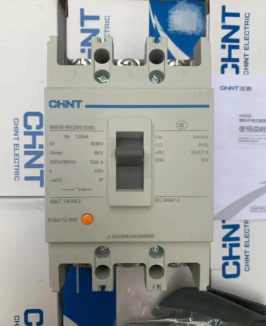circuit breaker lockout
 Circuit Breaker Lockout
Circuit Breaker Lockout
A **circuit breaker lockout** refers to a safety mechanism or procedure that prevents a circuit breaker from being turned on (closed) or ensures it remains in the "off" (open) position. This is critical for safety during maintenance, repairs, or when isolating a circuit to prevent accidental energization. Below is a detailed explanation of its purpose, types, and how to handle it:
1. Purpose of Circuit Breaker Lockout**
- **Safety**: Prevents electrical shock or injury to technicians working on circuits by ensuring the breaker cannot be accidentally flipped on.
- **Prevent damage**: Stops the breaker from being reset if a fault (e.g., short circuit, overload) exists, avoiding equipment damage or fires.
- **Compliance**: Adheres to safety standards (e.g., OSHA in the U.S., IEC globally) that require lockout/tagout (LOTO) procedures for electrical work.
2. Types of Circuit Breaker Lockouts**
A. Mechanical Lockout (Intentional Locking)**
- **Used during maintenance**: A physical lock (e.g., padlock, lockout clip) is attached to the breaker handle to keep it in the "off" position.
- **How it works**:
1. Turn the breaker to the "off" position.
2. Attach a lockout device (specific to the breaker type) to the handle, which prevents it from moving to "on."
3. Add a tag indicating who locked it and the reason (part of LOTO procedures).
- **Common devices**:
- Universal breaker lockouts (fit most standard breakers).
- Custom locks for industrial or large breakers.
B. Fault-Induced Lockout (Automatic Locking)**
- **Triggered by a fault**: Some breakers (especially industrial or high-voltage models) have a built-in mechanism that "locks" the breaker in the tripped (off) position after a fault, preventing immediate reset.
- **Causes of automatic lockout**:
- **Overcurrent/short circuit**: The breaker trips, and the internal mechanism locks the handle so it cannot be pushed to "on" until the fault is resolved.
- **Ground fault/arc fault**: GFCI or AFCI breakers may lock out if a persistent fault is detected.
- **Signs of lockout**:
- The breaker handle is in a middle position (not fully "on" or "off") or stuck in "off."
- A visible indicator (e.g., red flag, warning light) may signal a fault.
3. How to Handle a Circuit Breaker Lockout**
Case 1: Mechanical Lockout (for Maintenance)**
- **To unlock (only if authorized)**:
1. Ensure the work is complete and the circuit is safe to energize.
2. Remove the physical lock and any tags (only by the person who applied them or a qualified worker).
3. Reset the breaker by turning it fully "off" first, then "on."
Case 2: Fault-Induced Lockout (Automatic)**
- **Steps to resolve**:
1. **Safety first**: Turn off all devices connected to the circuit to avoid a surge when resetting.
2. **Identify the fault**:
- Check for obvious issues (e.g., loose wires, burnt outlets, overloaded circuits).
- Use a multimeter to test for shorts, ground faults, or overloads.
3. **Reset the breaker**:
- For most residential breakers:
- Push the handle fully to "off" (even if it looks tripped).
- Wait 10–15 seconds, then push it to "on."
- For industrial/locked breakers:
- Some require a manual reset lever or key after fault clearance. Consult the manufacturer’s manual.
4. **Test the circuit**:
- Turn on devices one by one to identify if the fault recurs.
- If the breaker trips again, the fault is unresolved—call a licensed electrician.
Case 3: Lockout Due to Code Compliance (LOTO)**
- **During professional work**:
- A lockout is applied by electricians to comply with safety standards. Do not remove it unless you are qualified and authorized.
- Contact the responsible technician or utility company to restore power after work is completed.
4. Safety Precautions**
- **Never bypass a lockout**: Mechanical locks are there to protect you—removing them without authorization is a safety hazard.
- **Wear PPE**: Use insulated tools and gloves when working near locked-out breakers, even if they’re off.
- **Don’t force the handle**: If a breaker is locked due to a fault, forcing it "on" can cause arcing, fires, or damage the breaker.
- **Consult professionals**: For industrial, commercial, or repeated lockouts, hire a qualified electrician to diagnose and fix the issue.
5. When to Call a Professional**
- The breaker won’t reset after following the steps above.
- The lockout occurs repeatedly (indicating a persistent fault like a short circuit or faulty breaker).
- You’re unsure about the type of lockout or how to safely proceed (especially for industrial/high-voltage systems).
Summary**
A circuit breaker lockout is a vital safety feature, either intentionally applied for maintenance or automatically triggered by a fault. Mechanical lockouts require proper LOTO procedures for removal, while fault-induced lockouts demand troubleshooting to resolve underlying issues before resetting. Always prioritize safety and consult experts for complex problems to avoid electrical hazards.


